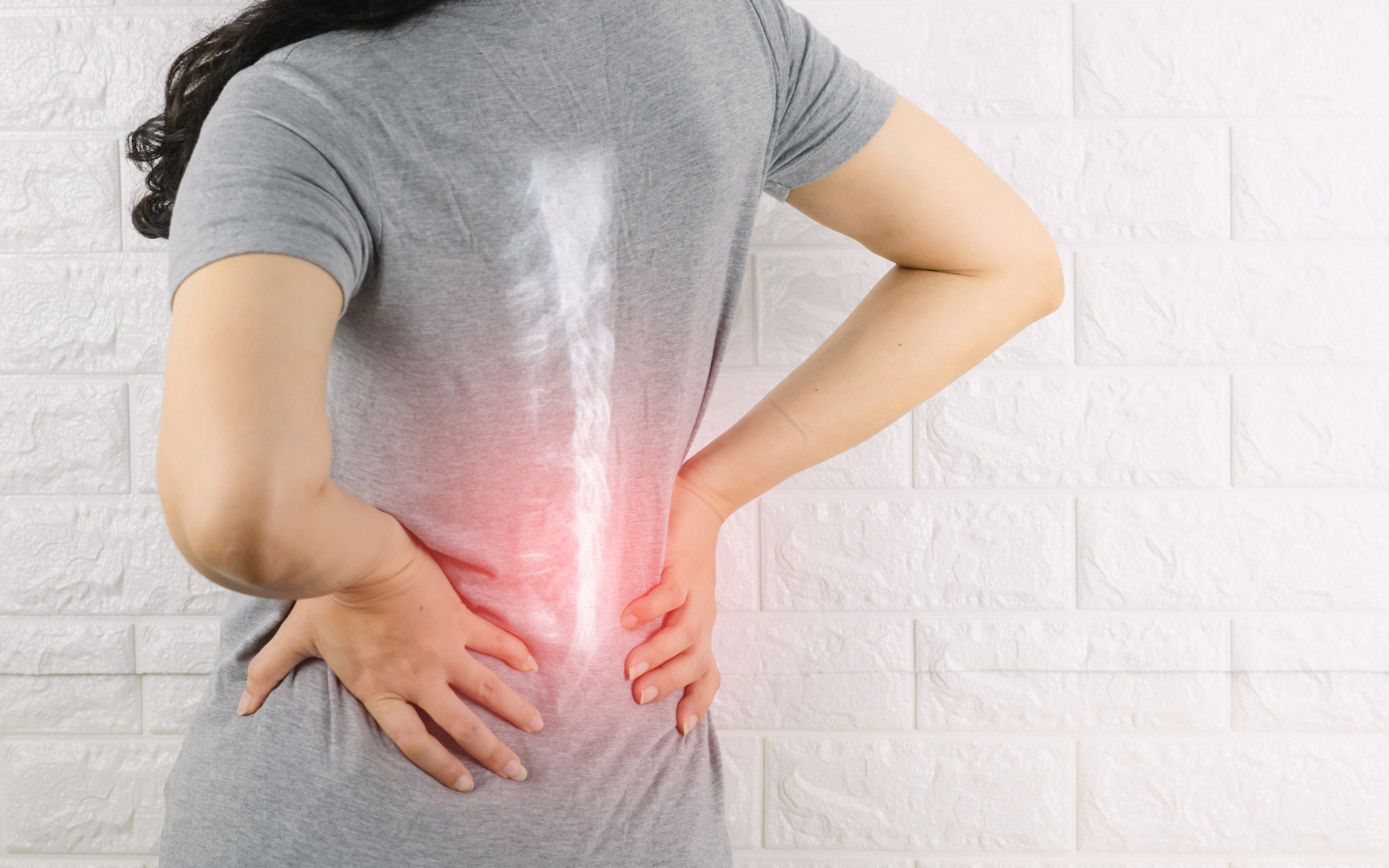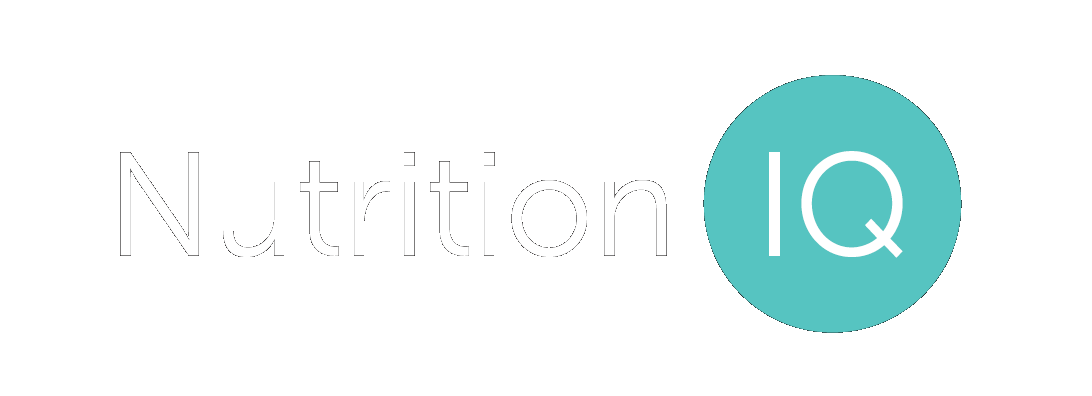Beat Period Symptoms: Nutrition and Lifestyles Hacks for a Better Period
July 08, 2024

Guest post written by Chiara Toscano, 4th-year dietetics student, University of Ottawa
Periods suck. Navigating the ups and downs of our cycles can feel like being stuck on a never-ending, unpredictable roller-coaster. From bloating and cramps to mood swings and fatigue, period symptoms can have a huge impact on our lives. If you are reading this, chances are you’ve been through this - maybe it’s every period or maybe it’s just the occasional one that feels worse than the others. But what if there was a way to make this roller-coaster ride a bit smoother? Is it possible to take control of your cycles and improve your symptoms? In this blog post, we’ll explore some tips based on the latest research, to help you feel your best, every day of the month.
Prefer to listen to this information instead of reading? Skip to the bottom and watch the video!
You can also download our FREE period guide that contains a handy summary of tips, with the top sources of nutrients to help manage symptoms, recipes and more! Enter your email below and it will be sent straight to your Inbox!
A word on the use of gender-binary language
Most studies cited in this post refer to people with a uterus as ‘women’ or ‘females’. We recognize that not all people with a uterus identify as women and that not all women have a uterus. These people may still experience symptoms related to the menstrual cycle and could benefit from the information presented in this post and the accompanying video. It is also important to acknowledge that those taking gender-affirming hormonal therapies may have differing and complex experiences related to their cycles, which require more research and are beyond the scope of this post.
The Impact of menstrual health
Why should we care about menstrual health? A study done in 2005 in Canada found that 60% of women surveyed had painful periods. Of these, 17% reported missing work or school because of their symptoms. Other studies have found that those with painful periods were 50% more likely to report poorer work performance and twice as likely to report sick days than other women in the past year. Painful periods seem to be more common among teenagers, and can negatively affect those pursuing higher education (with more absences, difficulty concentrating, and worse academic performance). Clearly, period pain and premenstrual (PMS) symptoms affect a lot of people, and can significantly impact their productivity. The kicker is that periods are not supposed to be painful to the point of disrupting your life. But too often, women’s pain is ignored or downplayed. Regardless of its effect on your productivity, the bottom line is that you shouldn’t have to suffer every month.
Understanding your cycle
You might only be aware of your cycle when you are on your period. But did you know that your menstrual cycle consists of four distinct phases? These are the menstrual phase, the follicular phase, the ovulatory phase, and the luteal phase. Menstruation (your period) is caused by a rapid change in certain hormones (specifically a form of estrogen called estradiol and progesterone) after ovulation, in the absence of pregnancy. Typically, people will experience symptoms during the luteal phase, due to this rapid decrease in hormones. This is referred to as premenstrual syndrome (PMS). Not everyone experiences PMS symptoms, but many do. These can include insomnia, fatigue, fluid retention, bloating, breast tenderness, heaviness or pressure in your pelvis, constipation, nausea, changes to appetite, breakouts, anxiety and depression among (many!) others.

With the arrival of your period, you may also, unfortunately, experience cramping, something referred to as ‘dysmenorrhea’. This can feel like throbbing or cramping pain in the lower abdomen, which starts 1-3 days before your period, peaks on day 1 and slowly decreases. For some, the pain can radiate to the lower back and legs and can be accompanied by nausea, headaches, dizziness, and loose stools. These symptoms can understandably greatly impact how you function in your day-to-day life.
Can you manage your period symptoms through food?
Does nutrition and lifestyle play a role in how we experience our cycles? Are there simple changes we can make to help make period symptoms more bearable? Maybe, but the changes may depend on the specific symptoms that you experience. Let’s review what the science has to say.
Fatigue
A common PMS symptom experienced during the luteal phase is fatigue. This is thought to be due to the changes in hormones at this time of the cycle, specifically a rapid decrease in estradiol (a form of estrogen) and progesterone during the late luteal phase. This symptom can be difficult to manage through nutrition alone. However, iron deficiency or borderline low iron levels can certainly contribute to this feeling of fatigue. And if you are someone with a particularly heavy menstrual flow, you might be more at risk of having low iron.
To help maintain your energy levels during your luteal phase, and throughout your cycle, try including sources of iron-rich foods in your diet, such as legumes, nuts and seeds, dark green leafy vegetables, shellfish, red meat, organ meat, whole grains, and eggs. Want to supercharge your iron absorption? Try combining your iron-rich foods with a source of vitamin C (found in fruits and veggies like citrus fruits, oranges, strawberries, peppers, and broccoli). An example of this could look like drizzling lemon juice on cooked kale or making bell peppers stuffed with ground meat. It can also be helpful to be aware of things that decrease your iron absorption. Drinking coffee or tea with your meals, or taking calcium supplements right before a meal can decrease your absorption of iron, so try to be mindful of these things.
Cramps
For some, cramps can be debilitating. The usual treatment for period cramps includes over-the-counter pain medications like acetaminophen, heat, rest, and oral contraceptives. But is there anything else we can do to help minimize the pain caused by cramps? Well, it turns out there is. Many studies are now showing that vitamin D supplementation is an effective alternative treatment for painful period cramps. This is thought to be due to vitamin D’s anti-inflammatory effect (it decreases the production of certain inflammatory molecules, responsible for causing those pesky cramps).
If you are looking to try vitamin D supplementation, choose vitamin D3, also known as cholecalciferol. It’s been proven to increase vitamin D levels in your blood better than other forms. Vitamin D drops or supplements that contain oil may be better absorbed than other forms of Vitamin D. This is because vitamin D is a fat-soluble vitamin and requires fat for absorption. Have a different type of supplement? Don’t worry, you can also increase absorption by taking it with food. You can also try including sources of vitamin D in your diet, like egg yolks, fatty fish, milk, and fortified plant-based beverages.
Another nutrient found to help with period cramps is calcium. This is thought to be because of calcium’s role in muscle contractions (and period cramps are essentially your uterus contracting). Try including sources of calcium-rich foods in your diet, like dairy products, tofu, dark green vegetables, fish and shellfish, and fortified plant-based beverages like soy milk. If you want to try supplementation, talk to your healthcare provider first to see if it’s right for you.
Finally, magnesium supplementation has been found to help with cramps and other PMS symptoms in recent research, although scientists are still unsure as to exactly how. Foods rich in magnesium include nuts and seeds, legumes, whole grains and leafy greens. Magnesium supplements do exist, but again, talk to a healthcare professional before starting any supplementation.
Bloating
Another uncomfortable symptom you might experience before your period is bloating. This could be caused by water retention or changes in your bowel habits, both of which are caused by hormonal changes at this time of your cycle. Some easy tips to help decrease bloating include trying to slow down on salt and caffeine intake, drinking more water, and engaging in some gentle exercise. There is a lack of research on specific nutrients or supplements that can help with bloating, although one study did find that vitamin E supplementation helped women decrease their water retention during their luteal phase. Vitamin E is found naturally in foods like vegetable oils, nuts and seeds, wheat germ, and some green leafy vegetables. As mentioned before, it’s always best to check with a healthcare provider before starting new supplements.
Constipation
Being constipated can add to the misery during the luteal phase. To help you stay regular late in your cycle, try increasing your fibre intake. It’s important to note that there are two kinds of fibre in foods: soluble and insoluble. To help with constipation, focus on getting enough insoluble fibre, which helps to speed up the transit of food in your digestive tract. Some food sources of insoluble fibre include whole-wheat flour, whole grains, wheat bran, nuts, legumes, and certain vegetables. If you are increasing your fibre intake, it’s also important to drink enough water (if not, you might be making the problem worse!). When you’re working on adding more fibre to your diet, the common advice is to start low, go slow, and drink a lot of water.
Can you manage period symptoms through lifestyle changes?
Hydration
Some studies have shown that drinking enough water (in the case of one study, 2 litres per day), significantly decreased cramps and the use of pain medications. Many studies have also shown that low water intake seems to be associated with a greater risk of having painful period cramps, and worse PMS symptoms overall. So, while more studies are necessary, being well-hydrated is good for your overall health, and might also help with PMS symptoms and period cramps.
Exercise
Scientists have found significant improvement in both physical and mental symptoms of PMS and period cramps with regular exercise. The American Society for Obstetrics and Gynecology also recommends routine exercise as one component of managing premenstrual symptoms. More studies are necessary, but physical activity can help support your health at all phases of your cycle. If the thought of exercising during your period sounds horrible, remember that you should choose physical activities that you enjoy and that are feasible to incorporate into your life. This may mean that exercise during your period looks different than the rest of the month and that’s fine. Any form of activity that you enjoy counts. Gentle walks in nature, playing in the park with your kids, and even dancing are all great options.
Stress management
Stress can have a profound impact on our health. In terms of period health, it has been shown that relaxation techniques like meditation, certain yoga practices, self-massage therapy and progressive muscle relaxation techniques may help in reducing period cramps specifically. It can also help with the emotional changes that are sometimes felt during the luteal phase (like anxiety, irritability or low mood). So, next time you know your period is around the corner, try taking some time for yourself and follow a short guided meditation, or do some gentle yoga.
Sleep and rest
We know that sleep is incredibly important for overall health. Generally, sleep quality and duration are worse during the luteal phase (due to your changing hormones), possibly contributing to fatigue during this time. It has also been found that while women actually tend to have objectively better quality sleep than men, they report feeling less rested and experience more daytime sleepiness overall. In terms of period health, studies show that not getting enough sleep (less than 7 hours per night) and going to bed late (after 11 pm) can significantly increase your risk of painful periods. So, try improving your ‘sleep hygiene’ by going to bed and waking up at roughly the same time every day, limiting your exposure to blue light before bed (looking at you, late-night scrolling), and keeping your room dark and cool. Melatonin supplements are increasingly popular to help with sleep. More studies are necessary to see if they help with PMS or painful cramps, although some studies do show some beneficial effects. Again, it’s best to talk to your doctor or pharmacist about whether trying any supplement is right for you.
Self-compassion through the cycle
Picture this: you wake up one morning, feeling a little bloated and ‘blah’. You’re not sure why, but you feel a little down. While getting dressed, you feel like nothing is fitting or feeling right, or your body image has taken a major hit for seemingly no reason. The whole day, you feel overly self-critical, anxious, irritable… Then you check your favourite period tracking app, and it turns out your period is coming in the next 3-5 days. A-ha. Studies have actually found that our body image can take a serious hit right before our periods. They find that body dissatisfaction peaks during the premenstrual phase. So how can we deal with this? Well, tracking your period and your symptoms throughout your cycle is a great first step. It can help you get in touch with how both your body and mind feel throughout the various phases of your cycle. It can also help you recognize that bad body image days or increased ‘body noise’ might be related to your cycle - meaning that this feeling won’t last. And while you might feel like this today, your body still deserves compassion and respect throughout this part of your cycle.
Video: Nutrition and Lifestyles Hacks for a Better Period
TLDR: Watch the video instead! If you've already read the blog post, it's the same information.
The bottom line on menstrual health
The menstrual cycle is complex and affects us more than we might realize. The science suggests that nutrition and lifestyle may impact how we experience our cycles, and can even play a role in helping manage symptoms, however, this may vary from person to person. Things like eating iron-rich foods, regular vitamin D supplementation, physical activity and stress management can all play a role in alleviating cramps, bloating, fatigue, and changes in your bowel habits. We hope that armed with these tips and a newfound understanding of the link between nutrition, lifestyle and your cycle, you will be able to experiment and find something that works for you so that you can navigate your menstrual cycle with comfort and ease. Remember, you deserve to feel good, every day of the month.
Eating for A Better Period: Your Period Guide

Looking for a helpful cheat sheet to help you manage your period symptoms through food? Check out our handy summary of tips, with the top sources of nutrients to help manage symptoms, recipes and more! Enter your email below and it will be sent straight to your Inbox!
References
Al-Husban, N., Odeh, O., Dabit, T., & Masadeh, A. (2022). The Influence of Lifestyle Variables on Primary Dysmenorrhea: A Cross-Sectional Study. International Journal of Women’s Health, Volume 14, 545–553. https://doi.org/10.2147/ijwh.s338651
Anne Marie Whelan, Jurgens, T. M., & Naylor, H. (2009). Herbs, vitamins and minerals in the treatment of premenstrual syndrome: a systematic review. PubMed, 16(3), e407-29.
Armour, M., Ee, C. C., Naidoo, D., Ayati, Z., Chalmers, K. J., Steel, K. A., de Manincor, M. J., & Delshad, E. (2019). Exercise for dysmenorrhoea. Cochrane Database of Systematic Reviews, 9(9). https://doi.org/10.1002/14651858.cd004142.pub4
Armour, M., Ferfolja, T., Curry, C., Hyman, M. S., Parry, K., Chalmers, K. J., Smith, C. A., MacMillan, F., & Holmes, K. (2020). The Prevalence and Educational Impact of Pelvic and Menstrual Pain in Australia: A National Online Survey of 4202 Young Women Aged 13-25 Years. Journal of Pediatric and Adolescent Gynecology, 33(5), 511–518. https://doi.org/10.1016/j.jpag.2020.06.007
Bahrami, A., Avan, A., Sadeghnia, H. R., Esmaeili, H., Tayefi, M., Ghasemi, F., Nejati Salehkhani, F., Arabpour-Dahoue, M., Rastgar-Moghadam, A., Ferns, G. A., Bahrami-Taghanaki, H., & Ghayour-Mobarhan, M. (2018). High dose vitamin D supplementation can improve menstrual problems, dysmenorrhea, and premenstrual syndrome in adolescents. Gynecological Endocrinology, 34(8), 659–663. https://doi.org/10.1080/09513590.2017.1423466
Burnett, M. A., Antao, V., Black, A., Feldman, K., Grenville, A., Lea, R., Lefebvre, G., Pinsonneault, O., & Robert, M. (2005). Prevalence of Primary Dysmenorrhea in Canada. Journal of Obstetrics and Gynaecology Canada, 27(8), 765–770. https://doi.org/10.1016/s1701-2163(16)30728-9
Çelik, A. S., & Apay, S. E. (2021). Effect of progressive relaxation exercises on primary dysmenorrhea in Turkish students: A randomized prospective controlled trial. Complementary Therapies in Clinical Practice, 42, 101280. https://doi.org/10.1016/j.ctcp.2020.101280
Chen, C. X., Carpenter, J. S., Gao, X., Toh, E., Dong, Q., Nelson, D. E., Mitchell, C., & Fortenberry, J. D. (2021). Associations Between Dysmenorrhea Symptom-Based Phenotypes and Vaginal Microbiome: A Pilot Study. Nursing Research, 70(4), 248–255. https://doi.org/10.1097/NNR.0000000000000510
Chen, Y.-C., Chiang, Y., Lin, Y.-H., Huang, K.-C., Chen, H., Hamdy, N. M., Huang, T.-C., Chang, H., Shieh, T., Huang, Y.-J., & Shih Min Hsia. (2023). Effect of Vitamin D Supplementation on Primary Dysmenorrhea: A Systematic Review and Meta-Analysis of Randomized Clinical Trials. Nutrients, 15(13), 2830–2830. https://doi.org/10.3390/nu15132830
Donayeva, A., Amanzholkyzy, A., Abdelazim, I., Saparbayev, S., Nurgaliyeva, R., Kaldybayeva, A., Zhexenova, A., Gubasheva, G., Ayaganov, D., & Samaha, I. (2023). The effects of vitamin D and calcium on primary dysmenorrhea: a systematic review. Journal of Medicine and Life, 16(11), 1597–1605. https://doi.org/10.25122/jml-2023-0248
Gök, S., & Gök, B. (2022). Investigation of Laboratory and Clinical Features of Primary Dysmenorrhea: Comparison of Magnesium and Oral Contraceptives in Treatment. Cureus. https://doi.org/10.7759/cureus.32028
Health Canada. (2019). Iron - Canada.ca. Canada.ca. https://www.canada.ca/en/health-canada/services/nutrients/iron.html
Healthline. (2017, April 13). Period Bloating: 5 Ways to Manage Bloating. Healthline. https://www.healthline.com/health/womens-health/period-bloating#management
Higuchi, T., Ueno, T., Uchiyama, S., Matsuki, S., Ogawa, M., & Takamatsu, K. (2023). Effect of γ-tocopherol supplementation on premenstrual symptoms and natriuresis: a randomized, double-blind, placebo-controlled study. BMC Complementary Medicine and Therapies, 23(1). https://doi.org/10.1186/s12906-023-03962-5
Izyan Atiqah Zakaria, Zain, M., Chew Kah Teik, Muhammad Azrai Abu, Ani Amelia Zainuddin, Aziz, A., Safian, N., Norfilza Mohd Mokhtar, Ali, Ng Beng Kwang, Ismail, M., Muhammad Rafiuddin Hamizan, Ab, S., & Ghani, A. (2024). The role of probiotics in improving menstrual health in women with primary dysmenorrhoea: A randomized, double-blind, placebo-controlled trial (the PERIOD study). Women’s Health, 20. https://doi.org/10.1177/17455057241234524
Jeong, D.-K., Lee, H. K., & Kim, J. (2023). Effects of sleep pattern, duration, and quality on premenstrual syndrome and primary dysmenorrhea in korean high school girls. BMC Women’s Health, 23(1). https://doi.org/10.1186/s12905-023-02600-z
Kaczmarek, M., & Trambacz-Oleszak, S. (2015). The association between menstrual cycle characteristics and perceived body image: A cross-sectional survey of Polish female adolescents. Journal of Biosocial Science, 48(3), 374–390. https://doi.org/10.1017/s0021932015000292
Kanchibhotla, D., Subramanian, S., & Singh, D. (2023). Management of dysmenorrhea through yoga: A narrative review. Frontiers in Pain Research, 4. https://doi.org/10.3389/fpain.2023.1107669
Keshavarzi, F., Mahmoudzadeh, F., Brand, S., Sadeghi Bahmani, D., Akbari, F., Khazaie, H., & Ghadami, M. R. (2018). Both melatonin and meloxicam improved sleep and pain in females with primary dysmenorrhea—results from a double-blind cross-over intervention pilot study. Archives of Women’s Mental Health, 21(6), 601–609. https://doi.org/10.1007/s00737-018-0838-x
Management of Premenstrual Disorders: ACOG Clinical Practice Guideline No. 7. (2023). Obstetrics & Gynecology, 142(6), 1516–1533. https://doi.org/10.1097/aog.0000000000005426
Mayo Clinic. (2018). Menstrual cramps - Symptoms and causes. Mayo Clinic. https://www.mayoclinic.org/diseases-conditions/menstrual-cramps/symptoms-causes/syc-20374938
Mayo Clinic. (2022). Kick PMS bloat to the curb. Mayo Clinic. https://www.mayoclinic.org/healthy-lifestyle/womens-health/in-depth/water-retention/art-20044983?pg=1
McLaughlin, J. E. (2022, April). Female Reproductive Endocrinology - Female Reproductive Endocrinology. Merck Manual Professional Edition. https://www.merckmanuals.com/professional/gynecology-and-obstetrics/female-reproductive-endocrinology/female-reproductive-endocrinology?query=menstrual%20cycle#Menstrual-Cycle_v1061582
Mitsuhashi, R., Sawai, A., Kiyohara, K., Shiraki, H., & Nakata, Y. (2023). Factors Associated with the Prevalence and Severity of Menstrual-Related Symptoms: A Systematic Review and Meta-Analysis. International Journal of Environmental Research and Public Health, 20(1), 569. https://doi.org/10.3390/ijerph20010569
Mohebbi Dehnavi, Z., Jafarnejad, F., & Sadeghi Goghary, S. (2018). The effect of 8 weeks aerobic exercise on severity of physical symptoms of premenstrual syndrome: a clinical trial study. BMC Women’s Health, 18(1). https://doi.org/10.1186/s12905-018-0565-5
Munro, A. K., Hunter, E. C., Hossain, S. Z., & Keep, M. (2021). A systematic review of the menstrual experiences of university students and the impacts on their education: A global perspective. PLOS ONE, 16(9), e0257333. https://doi.org/10.1371/journal.pone.0257333
Parazzini, F., Di Martino, M., & Pellegrino, P. (2017). Magnesium in the gynecological practice: a literature review. Magnesium Research, 30(1), 1–7. https://doi.org/10.1684/mrh.2017.0419
Pinkerton, J. V. (2023, January). Premenstrual Syndrome (PMS) - Premenstrual Syndrome (PMS). Merck Manual Professional Edition. https://www.merckmanuals.com/professional/gynecology-and-obstetrics/menstrual-abnormalities/premenstrual-syndrome-pms#Symptoms-and-Signs_v1062694
Schoep, M. E., Adang, E. M. M., Maas, J. W. M., De Bie, B., Aarts, J. W. M., & Nieboer, T. E. (2019). Productivity loss due to menstruation-related symptoms: a nationwide cross-sectional survey among 32 748 women. BMJ Open, 9(6), e026186. https://doi.org/10.1136/bmjopen-2018-026186
Söderman, L., Edlund, M., Böttiger, Y., & Marions, L. (2021). Adjuvant use of melatonin for pain management in dysmenorrhea — a randomized double-blinded, placebo-controlled trial. European Journal of Clinical Pharmacology, 78(2), 191–196. https://doi.org/10.1007/s00228-021-03234-6
Takeda, T., Yoshimi, K., Kai, S., Ozawa, G., Yamada, K., & Hiramatsu, K. (2022). Characteristics of the gut microbiota in women with premenstrual symptoms: A cross-sectional study. PLOS ONE, 17(5), e0268466. https://doi.org/10.1371/journal.pone.0268466
Torkan, B., Mousavi, M., Dehghani, S., Hajipour, L., Sadeghi, N., Ziaei Rad, M., & Montazeri, A. (2021). The role of water intake in the severity of pain and menstrual distress among females suffering from primary dysmenorrhea: a semi-experimental study. BMC Women’s Health, 21(1). https://doi.org/10.1186/s12905-021-01184-w
Tsai, I-Chen., Hsu, C.-W., Chang, C.-H., Lei, W.-T., Tseng, P.-T., & Chang, K.-V. (2024). Comparative Effectiveness of Different Exercises for Reducing Pain Intensity in Primary Dysmenorrhea: A Systematic Review and Network Meta-analysis of Randomized Controlled Trials. Sports Medicine - Open/Sports Medicine - Open, 10(1). https://doi.org/10.1186/s40798-024-00718-4
Vaucher, P., Druais, P.-L., Waldvogel, S., & Favrat, B. (2012). Effect of iron supplementation on fatigue in nonanemic menstruating women with low ferritin: a randomized controlled trial. CMAJ : Canadian Medical Association Journal = Journal de l’Association Medicale Canadienne, 184(11), 1247–1254. https://doi.org/10.1503/cmaj.110950
Yin, W., Zhang, J., Guo, Y., Wu, Z., Diao, C., & Sun, J. (2023). Melatonin for premenstrual syndrome: A potential remedy but not ready. Frontiers in Endocrinology, 13. https://doi.org/10.3389/fendo.2022.1084249
Leave a comment
Comments will be approved before showing up.
Also in Nutrition News

The Ultimate Guide to Stress-Free, Delicious Gluten-Free Holiday Hosting
November 19, 2025
If you are planning on hosting for the holidays and have a gluten-free guest, here are some of my top tips to create a safe and stress-free holiday meal.

Starbucks and Tim Hortons are selling high-protein lattes: Do you need them?
September 17, 2025
Starbucks and Tim Hortons are jumping on the high-protein trend, but do you need a high-protein coffee?

Bone Health in Women After 40: How to Keep Your Bones Strong for Life
April 11, 2025
Wondering how to keep your bones strong as you age? This blog breaks down how menopause, nutrition, and even weight loss medications like Ozempic impact your bone health—and what you can do to protect it.
+Recent Articles
-
The Ultimate Guide to Stress-Free, Delicious Gluten-Free Holiday Hosting
November 19, 2025
-
Starbucks and Tim Hortons are selling high-protein lattes: Do you need them?
September 17, 2025
-
Bone Health in Women After 40: How to Keep Your Bones Strong for Life
April 11, 2025
-
Don't Make These Four Mistakes Planning your New Year's Resolutions
December 16, 2024
-
The #1 Eating Mistake You May Be Making Over the Holidays
December 11, 2024
-
A Holistic Approach: Managing Endometriosis Symptoms through Nutrition and Lifestyle
November 27, 2024
-
Nourish to Flourish: Nutrition and Lifestyle Strategies for Managing PCOS
September 30, 2024
-
Thriving Through Perimenopause: Simple Nutrition and Lifestyle Changes for Symptom Relief
July 22, 2024
-
Beat Period Symptoms: Nutrition and Lifestyles Hacks for a Better Period
July 08, 2024
-
Sun, Sand, & Self-Esteem: Navigating Body Image in the Summer
June 21, 2024
Sign up to get nutrition tips and tricks directly to your Inbox, as well as the latest on any promotions, webinars, or services being offered by Nutrition IQ.
© 2025 Nutrition IQ.


